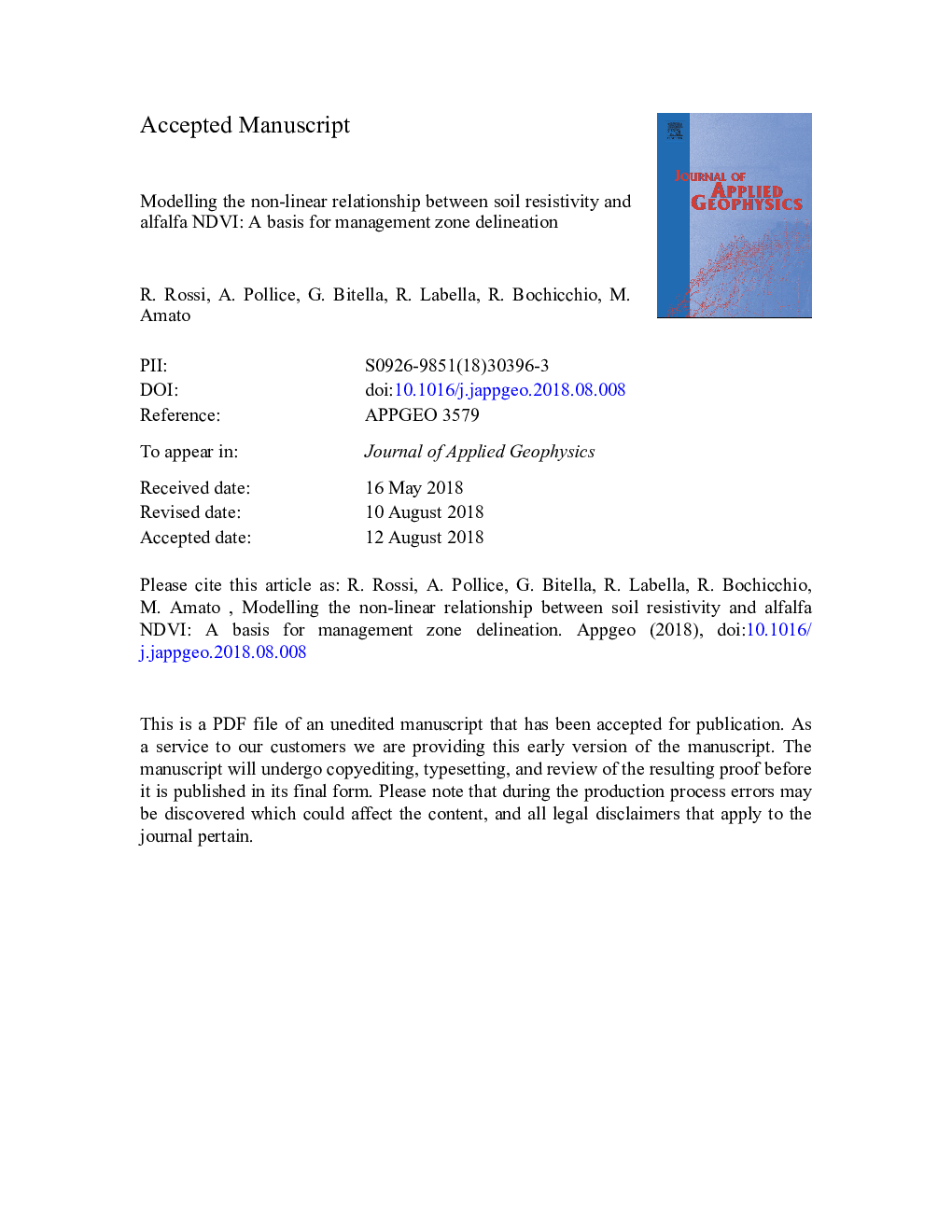| Article ID | Journal | Published Year | Pages | File Type |
|---|---|---|---|---|
| 10121026 | Journal of Applied Geophysics | 2018 | 35 Pages |
Abstract
Alfalfa is one of the most important forage legumes in the world, and increasing its competitiveness is among European priorities. One issue that needs to be specifically addressed in designing agronomic strategies for perennial crops like alfalfa is their higher dependence on deep soil resources compared to annuals, but tools for mapping soil variability at the relevant depth are needed. We analysed the relationship between multi-depth soil resistivity and alfalfa NDVI variation across two years. Forage ground cover was significantly and non-linearly related to multiple-depth resistivity at all dates with different shapes of non-linear relationships. NDVI showed time-persistent spatial features related to soil variability. Generalized additive models proved to be an effective modelling technique for expressing the non-linearity that frequently occurs in soil-plant relationships. It was used here as a base for a soil zonation that splits the field in areas which correspond to permanent soil features and different plant-soil relationships. This approach to management zone delineation was compared to a zonation obtained using a standard methodology based on the use of a fuzzy c-means clustering algorithm. Results are discussed in terms of management decisions and possible applications to perennial forage research.
Keywords
AICMZAATVNCEGAMDGPSBICNIRLEDsFPISoil spatial variabilityLight emitting diodesLeaf area indexNDVILAICoefficient of Variationdry matterNear infraredGeneralized additive modelsBayesian information criterionAkaike information criterionResistivityElectrical resistivityManagement zonePrecision agriculturePrecision farmingAlfalfa
Related Topics
Physical Sciences and Engineering
Earth and Planetary Sciences
Geophysics
Authors
R. Rossi, A. Pollice, G. Bitella, R. Labella, R. Bochicchio, M. Amato,
